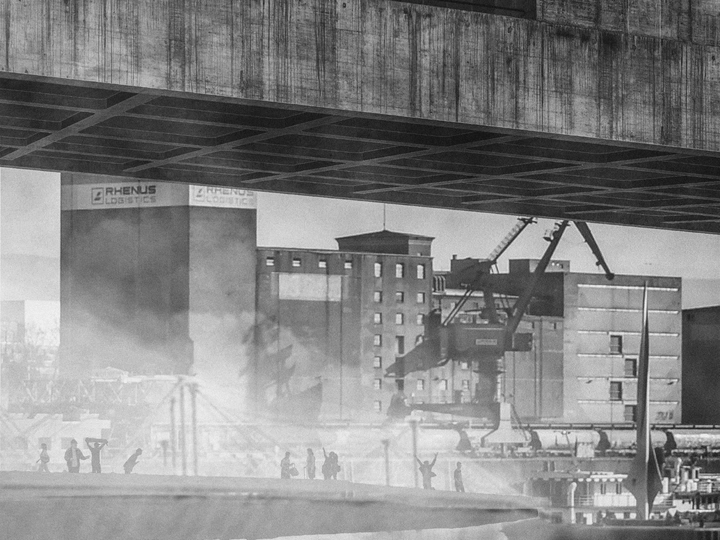(t)rhypark inhabiting the water, living the border

We are Flavio and Xavier, both architects graduating in 2021 and working in Basel and Brussels. Today, more than ever, we are convinced of the role that the architect plays in the transitions of our territories. These urgent adaptations push us, as young architects, to take advantage of the experiments and theoretical contributions resulting from our diploma project. The background story of this work invites us to innovate in the fields that it crosses on a scientific, cultural and social level.
The project takes the form of a floating structure, placed upon the Rhine in the direction of its flow, on the border between the three countries. Various programs are deployed, in the form of micro-systems dedicated to the protection of the natural heritage, the production of raw materials and finally leisure activities. These consist mainly of accompanying the various stages of maturation of the salmon in fresh water, prior to its migration to salt water. The objective is to participate in the reintroduction of salmon into the Rhine and to allow the river to gradually recover its salmonic character.
This first part of the program is accompanied by aquaculture production, taking advantage of the rich nutrients released by the fish, while ensuring natural water purification. This reinterpreted culture allows for continuous plant production without chemical inputs and with 90% less water consumption than soil-based cultures. The production of bio-based pigments completes this productive ensemble, echoing past industrial neglect that has greatly polluted the water system on a large scale. Reconstituting this knowledge and adapting it to current issues shows that it is possible to renew oneself from one decade to the next, and to reinvent oneself from one century to the next without disregard for the past.
In terms of production, the aim is to create as many links as possible between the different entities of the program. The objective being the convergence of activities that were not initially associated. Their common denominator is the indispensable use of water for their proper functioning: irrigation, rinsing, heating, treatment, cooling (etc.). The fact that the different stages of aquaculture and green chemistry processes were combined enabled us to create a high-performance system, allowing each part of the program to feed the other and reduce losses.